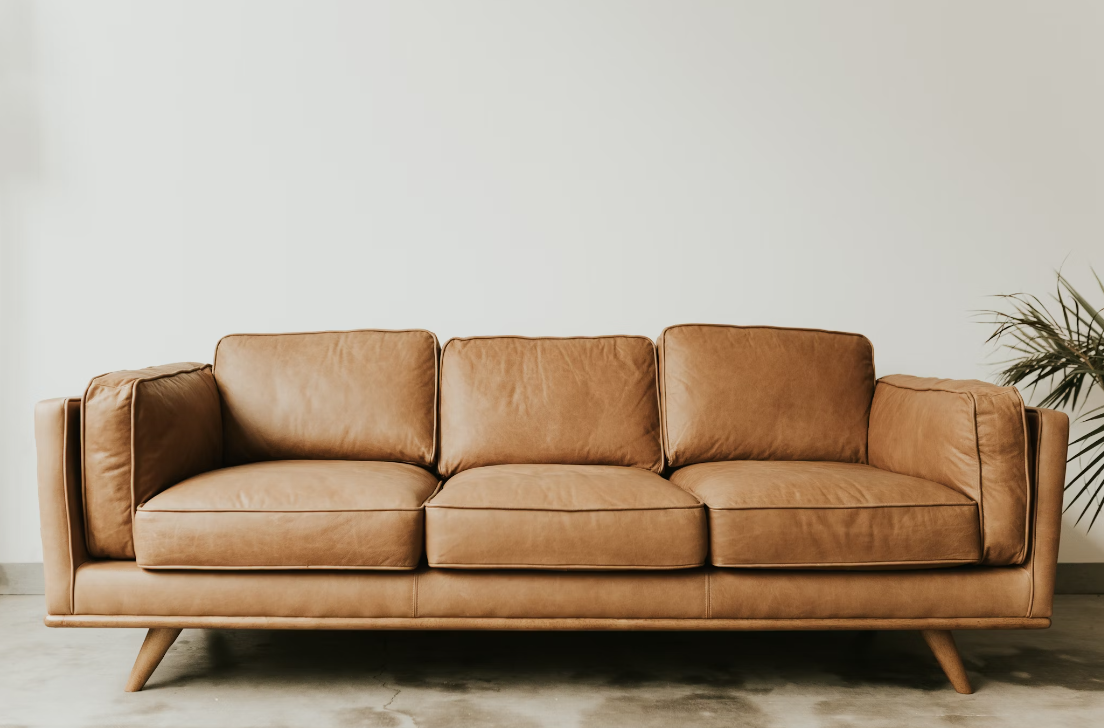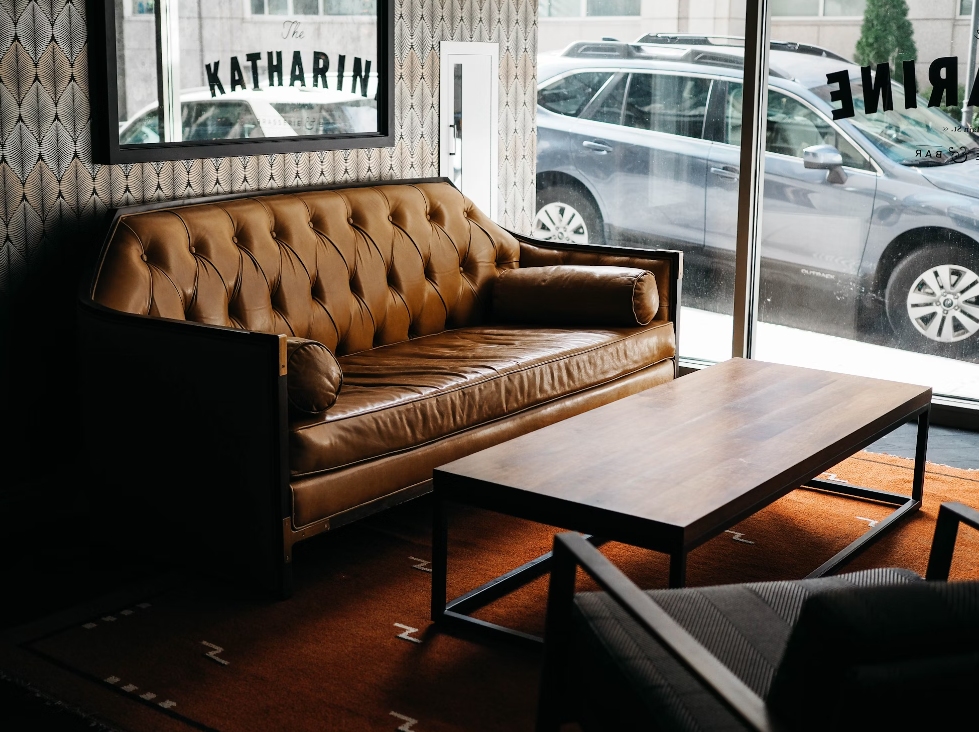-
Shop
- Furniture
- Kitchen
- Bathroom
- Home & Garden

Leather sofas are amazing – comfy, stylish, and they last a long time. But sometimes, after a while, they get a bit bumpy or wrinkled.
This is called “puddling” or “comfort wrinkles”, and it’s totally normal!
In this post, I’ll explain what causes leather sofa puddling and how to prevent it in the first place.
Plus, I’ll also show you what to do if your couch is already wrinkled.
Here are some of the main reasons why your leather couch is puddling:
Also Read: Couch feels damp

One of the main reasons why leather sofas puddle is because of the constant weight and pressure on certain areas over time.
When you sit in the same spots on the sofa repeatedly, the leather gradually stretches and sags due to the pressure.
Inside the sofa, the dense foam cushions start to compress, losing their original shape and support. As you sink deeper into these areas, more strain is put on the stretched leather.
This results in wrinkles, sagging, and permanent marks in those heavily-used spots.
Puddling often happens on the seats and armrests of the sofa since they bear most of the weight and pressure when you sit.
Not properly cleaning and conditioning your leather sofa is another big reason why it might start puddling and sagging sooner than expected.
Leather needs regular care to stay soft and avoid drying out or cracking.
When you don’t condition your leather often with a good-quality leather conditioner, it gradually loses its moisture and natural oils.
BTW, also check out our Luxurious Bubble Cloud Sofa
This makes the leather stiff, brittle, and more likely to develop creases, cracks, and permanent stretch marks.
Another cause is too much heat, direct sunlight, or high humidity.

Both heat and humidity can make the leather lose moisture, which can lead to it becoming stiff, dry, and prone to cracking over time.
Direct sunlight, in particular, is a big problem.
The UV rays can dry out the leather fibers and make them brittle, making the leather more likely to stretch out and hold wrinkles permanently when you sit on it.
Overly dry conditions from indoor heating in winter combined with hot summer months create temperature extremes that can really take a toll on leather upholstery.
The quality of the leather itself and the overall sofa construction will also affect how susceptible a sofa is to puddling over its lifespan.
Bargain basement sofas are more prone to puddling because they use lower grades of genuine leather or bonded leathers which don’t have the same durability as full-grain leathers.
And cushions are made with less supportive foam that compresses and wears out faster.
Plus, the frame is more cheaply made and lacks the reinforced, hardwood frames.
That said, even the best quality sofas may eventually start to puddle with many years of use.
However, lower-end sofas are basically guaranteed to start sagging and wrinkling in just a few years.
BTW, also check out our Modern Minimalist Armless Sofa Chair
To avoid premature puddling, it’s best to invest in a high-quality, full-grain leather sofa from a reputable brand that uses dense foam cushions.
Look for sofas with eight-way hand-tied coiled springs which provide better support.
Once you have a good couch, the key is regular care and maintenance:
If your leather sofa has some comfort wrinkles, don’t worry too much—there are some things you can try, depending on how bad it is.
Cleaning and conditioning the sofa might help tighten it up and make it look better.
You could also try getting new sofa cushions or having the existing ones restuffed to fill out any sagging areas.
If the puddling is really bad, though, you might need to get help from a professional leather restoration company. They have special tools and techniques to stretch and reshape the leather so it looks tight and new again.
But keep in mind, this can be pretty pricey.
If the puddling is beyond repair, the only real solution is to get a new sofa.
Even with the best care, leather can stretch out over time with constant use.
Most good-quality leather sofas last anywhere from 7 to 15 years before they need replacing.




Leave a comment